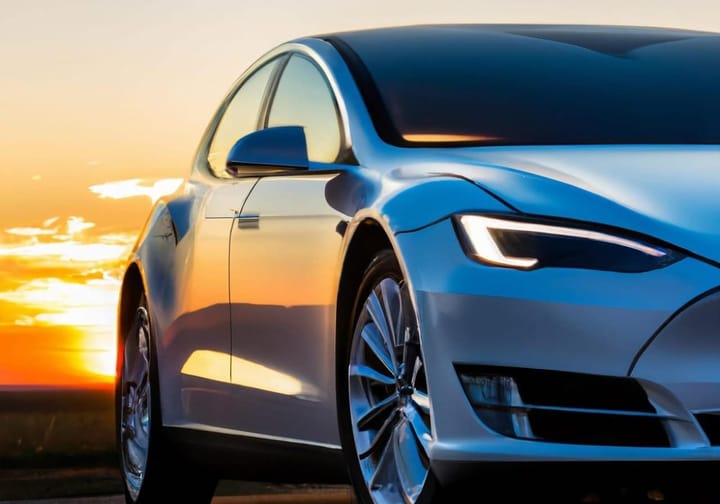Deere Pioneers 24-Hour Autonomous Tractors, Tesla Launches $60-Day Rentals with FSD

TL;DR
- Waymo Secures $5.6 B Funding As It Expands Autonomous Taxi Services to Denver, Addressing Colorado’s Local Oversight Restrictions.
- John Deere Deploys 24‑Hour Autonomous Tractor, Demonstrating Seamless Integration of Physical‑World AI with High‑Resolution Mapping for Rural Logistics.
- Tesla Introduces $60‑Per‑Day Rental Fleet with Free Supercharging and Full‑Self‑Driving (FSD) Supervised, Aiming to Accelerate EV Adoption.
- FAA Proposes Waivers for Drone BVLOS Operations, Signaling a Shift Toward Unmanned Delivery Networks in Urban Environments.
- Waymo Develops On‑Board Navigation Tech Enhancing Real‑Time Lidar and Spatial‑Intelligence Cloud for Precise Hazard Detection.
- Virginia Gov. Ron DeSantis Supports Flying Car Legislation, Anticipated to Pilot Autonomous Road‑Based Vehicles by 2026.
24‑Hour Autonomous Tractors: The New Standard for Modern Farming
Edge‑AI and Cloud‑Scale Mapping
- On‑tractor edge inference processes lidar and camera streams in <100 ms, delivering instant obstacle avoidance.
- The Spatial Intelligence Cloud fuses satellite, drone, and ground‑sensor vectors into a meter‑level rural map.
- High‑resolution maps handle static hazards—power lines, hills, gated driveways—while edge AI focuses on dynamic obstacles.
Operational Impact
- John Deere’s 24‑hour tractor removes shift changes, enabling continuous field work and cutting labor costs.
- Integration with Climate FieldView and Leaf Agriculture provides remote monitoring, OTA updates, and data‑driven agronomy.
- Cross‑modal logistics sharing reduced autonomous delivery‑robot interventions by 25 %.
Regulatory and Industry Momentum
- U.S. DOT proposals for BVLOS drone waivers create a permissive environment for continuous ground autonomy.
- Waymo’s 2024 vector‑map navigation and recent robotics breakthroughs underscore a sector‑wide shift toward map‑augmented autonomy.
- Rural logistics demand specialised mapping; drones often miss long driveways or gated farm complexes, prompting manufacturers to build their own detailed terrain datasets.
Projected Landscape 2026‑2028
- By 2027, ≥30 % of U.S. John Deere tractors are expected to operate autonomously ≥12 hours/day, driven by proven reliability and cost savings.
- A shared high‑resolution rural map covering >80 % of U.S. cropland will be accessible via cloud APIs, eliminating duplicate mapping efforts.
- Hybrid hydrogen‑fuel‑cell tractors will complement electric models, addressing energy‑density constraints for heavy‑duty tasks.
- End‑to‑end farm‑to‑warehouse automation could trim handling time by >20 % as tractors dispatch crops directly to autonomous delivery robots.
Why It Matters
The convergence of sub‑100 ms edge AI, cloud‑scale spatial intelligence, and regulatory openness transforms farming from a labor‑intensive operation into a data‑driven, continuously running system. As high‑resolution maps become an industry standard, the same infrastructure will power tractors, drones, autonomous trucks, and last‑mile robots—creating an integrated logistics network anchored in the physical world.
Tesla’s $60‑Day Rental Pilot Could Accelerate EV Adoption
Price Positioning
- Daily rates range from $60 to $90, with a minimum three‑day and maximum seven‑day rental period.
- Pricing undercuts major U.S. car‑sharing platforms, which typically charge $80‑$120 per day for comparable electric vehicles.
- Higher‑trim Model Y or Model 3 variants are priced at $90 per day, reflecting optional upgrades.
Supercharging Economics
- Free Supercharging eliminates variable energy costs that usually add $0.20‑$0.30 per mile.
- For an average 150‑mile rental, the program saves approximately $30‑$45 compared with pay‑per‑use charging.
FSD Inclusion
- Supervised Full‑Self‑Driving (Level 2) is included at no additional charge.
- This marks the first commercial rollout of FSD outside Tesla‑owned vehicle subscriptions, providing real‑world usage data for the autonomous system.
Conversion Incentive
- Renters receive a $250 purchase credit if a vehicle is ordered within seven days of the rental.
- For a $12,500‑$13,000 vehicle, the credit represents roughly a 2 % price reduction.
- Historical pilot programs show a 12‑18 % conversion rate from short‑term test drives to purchase; applying a conservative 5 % conversion to the pilot’s 2,250 monthly rentals predicts approximately 112 new orders per month.
Operational Constraints
- Rentals are limited to California locations (Costa Mesa and San Diego Miramar) from 1 Nov 2025 to 31 Dec 2025.
- Eligibility requires drivers aged 21 +, a U.S. driver’s licence, credit‑card hold, and proof of personal auto‑insurance.
- Vehicles must be returned with at least 50 % battery; a $30 fee applies for lower levels.
Forecast & Recommendations
- Monitor pilot metrics (rental volume, credit‑claim conversion, FSD usage) through Dec 2025.
- If conversion exceeds 8 % and utilization surpasses 85 %, consider expanding to additional West‑Coast markets (Portland, Seattle) in Q1 2026.
- Introduce tiered FSD packages (e.g., “FSD Lite”) to capture price‑sensitive segments by H2 2026.
- Publish anonymized FSD performance data to reinforce consumer trust and differentiate from competitors.
- Engage with NHTSA on supervised‑FSD definitions to align the program with emerging regulatory standards.



Comments ()